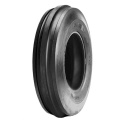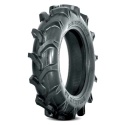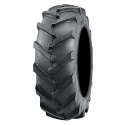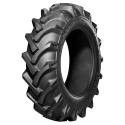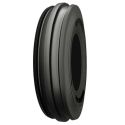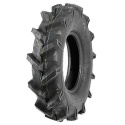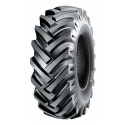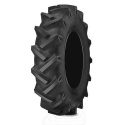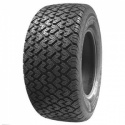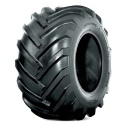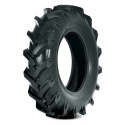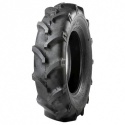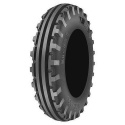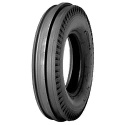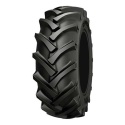Tractor Tyres







Terrain Tyres Ltd, offer a huge range or tractor tyres and agricultural tyres. The tyres we sell can be used for an equally extensive range of applications. Our customers come from all industries including farming, agriculture, forestry and plant. We have tyre patterns that can be used in heavy mud conditions around the farm, sensitive turf conditions around estates and golf courses and low impact applications in arable and row crop farming.
We offer a great choice of tyre brands and patterns to suit all requirements and budgets. Some of our most popular premium brands include Trelleborg, Michelin, Continental, Goodyear and Mitas. We support these ranges with a number of well established quality brands aimed at a more competitive price point. Brands such as BKT, Alliance, Cultor and OZKA are just some of the quality but price conscious tractor tyres available.
Many of the Agricultural tyres we sell come as OE fitment or are ideal as an OE replacement for popular machinery from Case IH, Claas, David Brown, Ferguson, Ford, Fordson, International Harvester, JCB, John Deere, Kubota, Lamborghini, Landini, Leyland, Marshall, Massey Ferguson, McCormick, New Holland, Nuffield, Renault, Same, Valtra, and Zetor. If you have any questions in relation to your agricultural tyre purchase, our team of advisors are always happy to assist.
Finding the correct tyre for your machine involves knowing the correct tyre size. The size is usually written on the sidewall of the tyre and can be displayed in a number of different ways. We have detailed an explanation of how the different methods of measuring the tyre can be written below:
Imperial Tyre Sizes - e.g. "12.4 - 28"
This measures the size of the tyres in inches. The first number denotes the width of the tyre which in the example above is 12.4". The "-" symbol shows that the tyre is of cross-ply (Bias ply) construction. The last number is the diameter of the rim (wheel) in inches. in this example it would be 28"
Metric Tyre Sizes - e.g. "340 / 85 R 24"
This is the newer, 'metric' measurement where the first number is again the width of the tyre, but is measured in mm. In this case 340mm. The second digit represents the tyre sidewall profile (height) as a percentage of the width. In this example the sidewall height would be 85% of 340mm (approx. 289mm). The letter R explains that the tyre is of radial construction and the last digit is again the diameter of the rim (wheel), still measured in inches.
There is more to choosing a tractor tyre than just the size required. Agricultural tyres are made and tested to work under certain criteria and limitations and the tyre load /speed and ply ratings all help choose the correct tyre for the application. The load speed index (service Index) is usually clearly marked on at least one of the sidewalls of the tyres.
Load Index is the limit of weight that the tyre can safely carry. Manufacturers make and test the tyres to operate under a certain weight. Once the tyre has passed these tests, it is awarded a load rating. It is essential that the correct load rating is used for agricultural machinery tyres. Most tractors used around the farm are worked hard and fitting a tyre that doesn't meet the requirements of the conditions can lead to premature wear, tyre damage or failure. This in turn reduces productivity and ends up costing more in the long term. Load indices are usually denoted by a number. The number itself is not the actual weight carried but represents the maximum weight that the tyre has been designed and tested for. Most tyres have a load index between 0 (45kg's) and 170 (6000kg's). For more information on agricultural tyre load index, please visit our load index chart page.
Speed Rating is the maximum speed that the tyre has been designed to operate at. As with the load index, the speed rating is an important part of any tyre purchase. Ensuring you have the correct tyre for the job means better operation, reduced downtime and associated costs and increased overall value. Agricultural tyre speed indices are usually shown as a letter. lower speed tyres use A1 (3mph) to A8 (25mph). The higher speed rated tractor tyres usually use B (31mph) to F (50mph).
Ply Ratings can be quite confusing in modern times and used to be the standard way to represent the overall strength of the tyre. Ply rating used to show how many plies of rubber that were used to make up the construction of the tyre. For example, if a tyre had a 10ply rating, it would be made up of 10 plies (layers) of rubber. Modern advances in agricultural tyre technology have lead to other materials than rubber being used and construction methods increasing the strength of the tyre. The PLY rating is less commonly used to convey the number of plies and is now more relevant in showing the strength of the tyre AS IF it had that number of plies of rubber. Agricultural tyre ply rating is still useful in assessing the overall strength of the tyre.
Tube Less (TL) Tractor Tyres are increasingly becoming the more popular option for modern agricultural machinery. Some of the benefits of tubeless tyres include ease of fitting and repair, cost and better resistance to puncture. Most modern radial tractor tyres are designed to be tubeless. Tubeless tyres are constructed in a way that the carcass and bead of the tyre are rated to hold air without leaks. Tubeless tyres can only be fitted to suitable tubeless rims, as the wheel itself also needs to be capable of sealing the air inside. As a result, Tubeless tyres can develop leaks from many areas and professional fitting and maintenance is always recommended. In a tubeless tyre the valve is attached to the rim itself and it is always good practise to change the valve when changing the tyre.
Tube Type (TT) Tractor Tyres are very common in older agricultural machinery and two wheel drive tractors. There are a number of benefits to tube type tyres, as they can be repaired fairly easily, without the need for specialist tyre equipment. The construction of a tube type tyre differs from the tubeless types, as the bead is not required to seal air. In fact it is best if it allows a small amount of air to pass the beads so that the air inside the tyre can be displaced when the tube is inflated inside! The inside of a tube type tractor tyre is also finished to a much higher standard and is much smoother in order to protect the tube from being ripped or chaffed by the inner surface. tube type rims / wheels are not required to be air tight as the inner tube itself holds all the air and incorporates the inflation valve.
Similar to most modern tyres, there are two main types of tractor tyre and agricultural tyre construction, Crossply and Radial.
Crossply Tractor Tyres are typically found on older machines as it is commonly seen as an older type of tyre technology. This isn't always the case though, as many crossply agricultural tyres offer better performance in certain situations. As a crossply tyre has a woven ply from bead to bead, it can allow for better deformation around obstacles and increased contact patch for grip on rougher terrains.
The sidewalls are often stronger in a crossply tyre so they also offer greater resistance to sidewall punctures which is particularly useful in certain industries where the sidewall can be exposed to damage. e.g. Forestry tyres and many agricultural tyres that operate on rough terrain.
The increased rigidity that a crossply tyre offers can also be of benefit in situations where stability is a consideration. For example, a front loader tractor tyre used for lifting bales of silage etc would benefit from less bounce when lifting and dropping loads than an equivalent radial tractor tyre.
The other main factor related to Crossply agricultural tyres is the price. As the construction method and materials used in a crossply tyre are cheaper, the cost price to the end user reflects this. Even though the wear rates of a crossply tyre could be reduced, the initial purchase price and usage attributes mentioned above can make it a very economical purchase.
Radial Tractor Tyres are usually found on more modern tractors and agricultural machinery. Radial tractor tyres offer certain benefits over their crossply counterparts. As a radial tyre is made up of two main sections (tread & sidewall) It allows the tyre to have characteristics that make it suitable for a wide variety of agricultural applications.
As the sidewall of a radial tractor tyre moves in a different way to the tread section of the tyre, extra comfort and stability can be engineered into the tyre due to the different materials used to make up the different sections of the tyre. For example, a radial agricultural tyre will usually have a 'softer' sidewall which allows the side of the tyre to flex independently from the tread section. This extra flexibility in the sidewall not only increases the comfort to the agricultural machinery operator, but it allows the tyre to respond to changes in the operating surface more easily and increase grip across the section of the tyre. This in turn reduces the wear rate of the tyre and also allows the tyre to offer a higher speed rating due to the reduced stress and heat build up that could be found in a more traditional crossply tractor tyre.
Radial tractor tyres also offer a better weight distribution, which in turn reduces the impact on the operating surface. This in turn can reduce losses cause by compaction in many farming sectors such as row crop operations. Better weight distribution, stability and wear rate all help offset the initial outlay from the increase purchase price that is typically found with a radial agricultural tyre.



